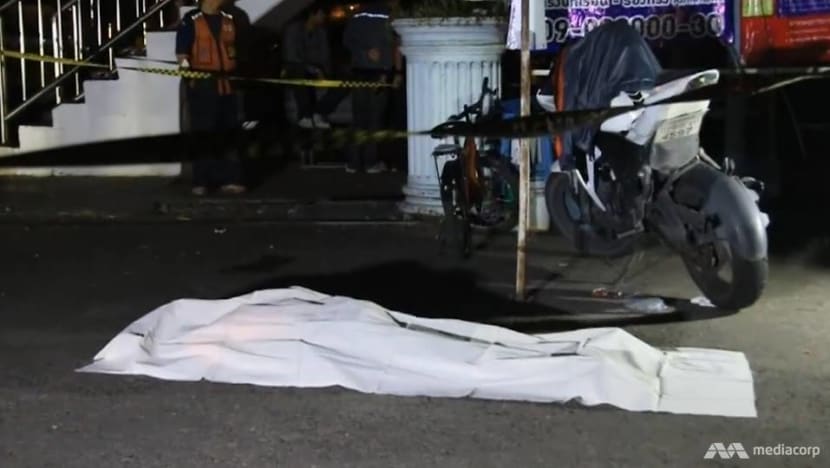In a shopping haven in Bangkok, one of Thailand’s deadliest school rivalries
The country's vocational student gangs have been around for decades, and the violence of late knows no bounds, not even murder. Get Real gains unprecedented access to one of the capital's most notorious colleges.
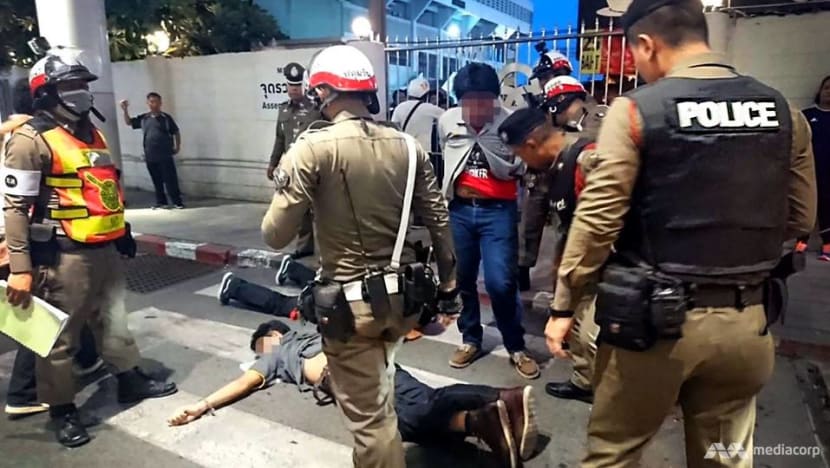
The police continue to enter the fray to stop the bloodshed.
BANGKOK: Vocational student Kamonwich Suwanthat was interning at a multinational logistics company and was a few months away from graduation. His parents were certain his education would change the family’s fortunes.
Until then, the 24-year-old was also helping his mother to make ends meet by selling noodles at her roadside market stall on most nights. That was where, on Oct 12, a stranger shot him four times, point-blank, and fled.
The fourth-year student bled to death in front of a crowd and his mother. She did not realise it then, but his place of study was the reason he was targeted — by a school gang.
The three students arrested a month later told the police they had no personal dispute with him, and gave this statement: “He was chosen simply because he can be killed in the same way his schoolmates killed our senior.”
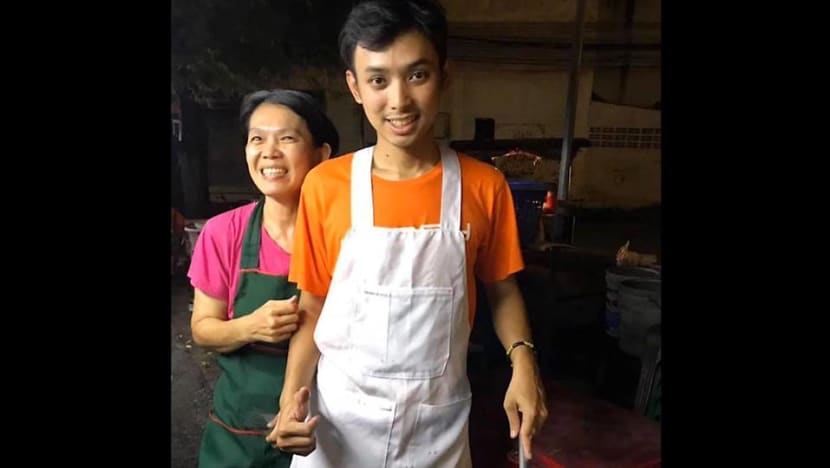
They were from the Pathumwan Institute of Technology, located just one kilometre from the victim’s school, the Rajamangala University of Technology Tawan-ok, Uthenthawai Campus.
Deadly violence between vocational students with a potentially bright future is common in Thailand. In Bangkok alone, there are years when more than 1,000 cases of brawls have been reported by mid-year.
And the rivalry that cost Kamonwich his life is a seven-decade, tit-for-tat grudge between two schools in the same neighbourhood as the MBK Centre, the giant shopping complex popular with tourists.
“Once I knew it was a school rivalry, I knew the (shooter) couldn’t be anyone else but a student from the institute nearby,” said Thai Rath TV crime journalist Nattapong Riabsantia.
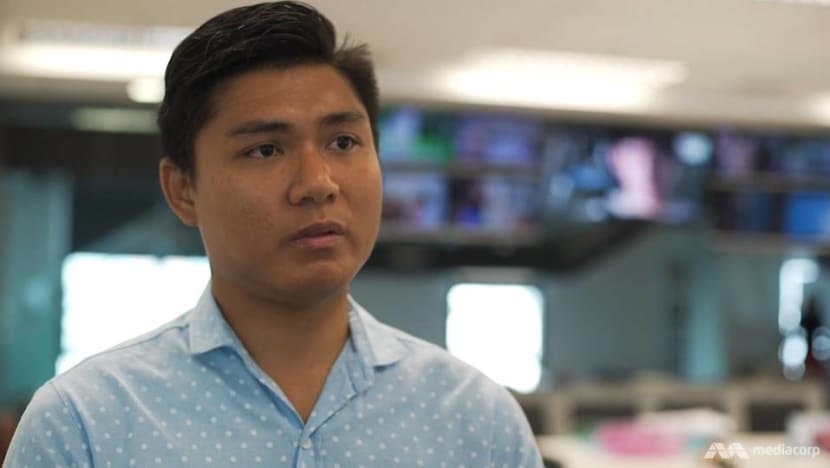
The programme Get Real gained unprecedented access to the institute to find out what is driving one of the country’s most notorious and violent rivalries, and what it would take to end the fighting. (Watch the episode here.)
A WELCOME TO TROUBLE
When Thai youths leave high school, they are separated into general or vocational education tracks. Those who pick the latter enrol at one of Thailand’s 416 vocational institutes to learn trade-specific skills. Pathumwan Institute of Technology is one of them.
The 87-year-old school trains future mechanics, technicians and electricians, among other trades. Despite its notoriety, this is where 19-year-old Nim chose to study electrical engineering “because what I learn will allow me to find work back in my hometown”.
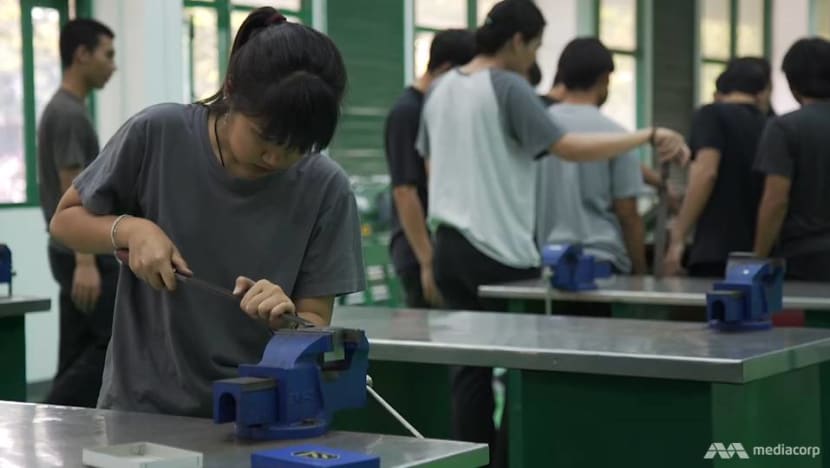
Her first semester, however, shows how the troublemaking can start. She signed up for a welcome camp that turned out to be a hazing experience — a rite of passage centred on loyalty to the school that brought the students together.
These camps, organised by the seniors without official sanction, are common in many Thai colleges and last mostly a week to a month. But at Pathumwan Institute, there can be such activities for the whole semester.
Nim (her nickname) gave up after two weeks. But those who endure get a “special’ T-shirt with the school crest, which they wear like a badge of honour. And that invites danger.
Benz, a fourth-year senior, said: “When we wear a school shirt with a logo, it’s very easy for us to spot who wants to fight or who wants to have power over us.”
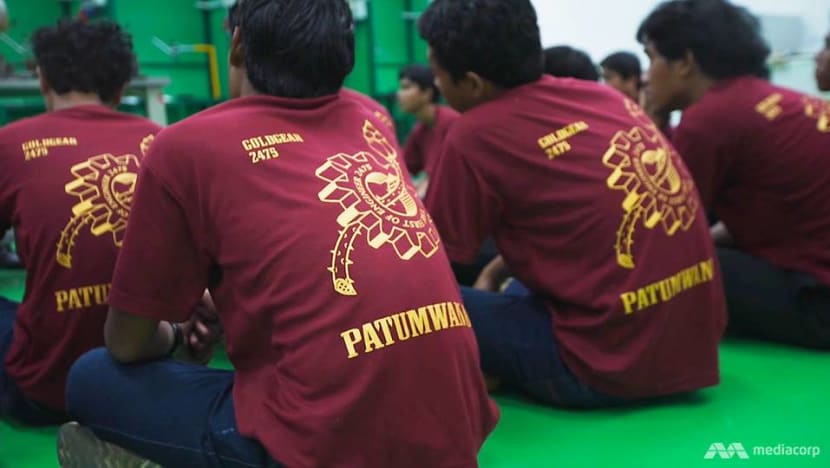
To students like him, however, the school crest is a way to gain respect.
Fees for vocational colleges are heavily subsidised, so they attract students from poorer areas that rely on agriculture. They often must leave their families living outside the city but get a chance to be initiated into a tight-knit fraternity.
“Being part of this helps me to overcome an inferiority complex,” admitted Benz.
Third-year student Pae added: “We’re like family. The minute I step in, someone will greet (me) and ask if I’ve eaten … ‘Do you have money for food? I’ll give you money.’”
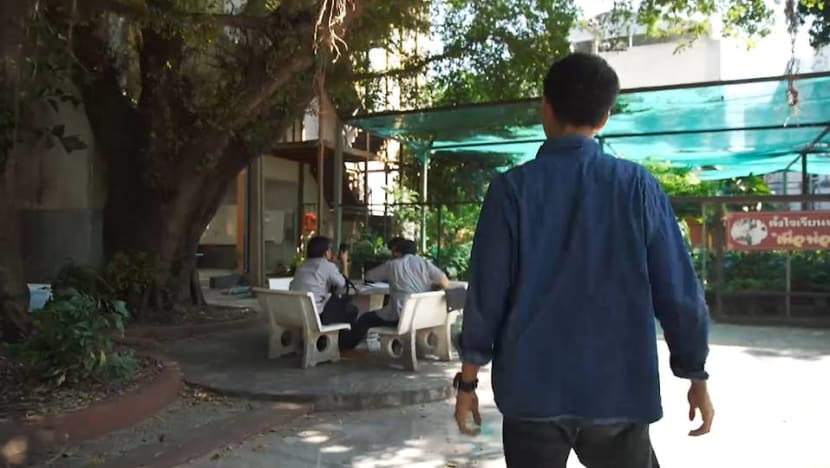
As new members learn to beware of students from a long-standing rival school, it is often their sense of loyalty and belonging that drives them to acts of violence.
Pathumwan old boy and former army soldier Sompode Subpradit would know. He was expelled from the school 50 years ago for taking part in violent brawls.
Now that he is retired, he “always” visits the school, and the students see him as an elder brother. Having listened to them, he said: “Sometimes the love and bond between friends and juniors is the reason for the violence.
“If a junior student is attacked by a student from the rival school, the seniors would be sad and would take revenge to protect the school’s pride.”
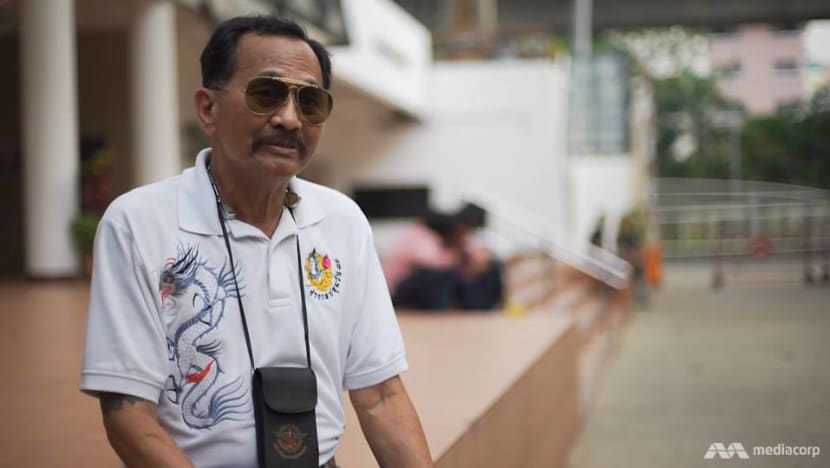
STRICT POLICING
Over the years, the authorities have tried all kinds of measures to stop school gangs, from sending offenders to army boot camps to discipline them, to holding outreach programmes.
Even a nationwide oath of peace, taken by almost a million vocational students in honour of King Bhumibol Adulyadej when he died in 2016, has not ended the inter-school violence.
At Pathumwan Institute, students have worn a standard vocational college uniform since 1975, which many other colleges have also adopted. This uniform does not have the school logo, making its students indistinguishable from others.
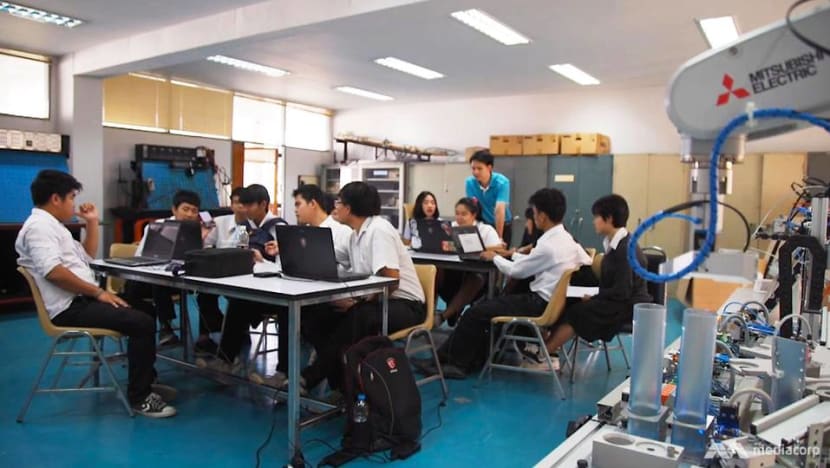
They are also told to be cautious, and the rules do include not allowing them to wear the school’s logo or colours outside the school grounds, in a bid to prevent rival students from identifying them.
But it is clear that there are renegades flaunting their school crest. And the Thai police continue to enter the fray to stop the bloodshed.
“Typically (from past cases), students use knives to stab each other. They’d grab the rival’s neck and stab him,” said Suppression Squad Leader Sarun Ausub from the Pathumwan District Police Station.
“If we (the police) aren’t there to check on them, they may stab each other to death. That’s happened before.”
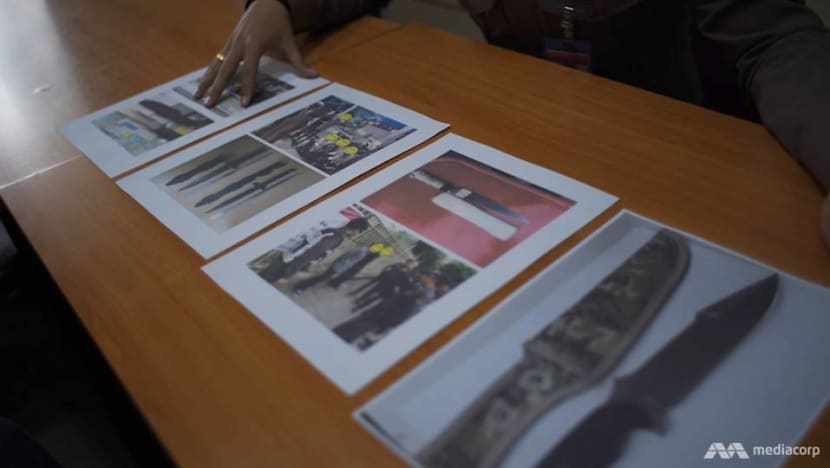
A clash in August 2017, for example, which happened outside the MBK Centre, left one student dead after he was stabbed. Since then, the police and both schools have come together with a plan to stop these brawls.
Once in the morning when students are coming into school and once in the afternoon when they are leaving, patrol officers keep a lookout for the two sets of firebrand students from rival schools, to keep them apart.
“We only target students from the two institutes,” said Pathumwan District’s chief of police, Superintendent Thobthorn Jitmun.
“We have an agreement with the schools to immediately approach students gathering in groups. We’d search for weapons and ask them to leave the area.”
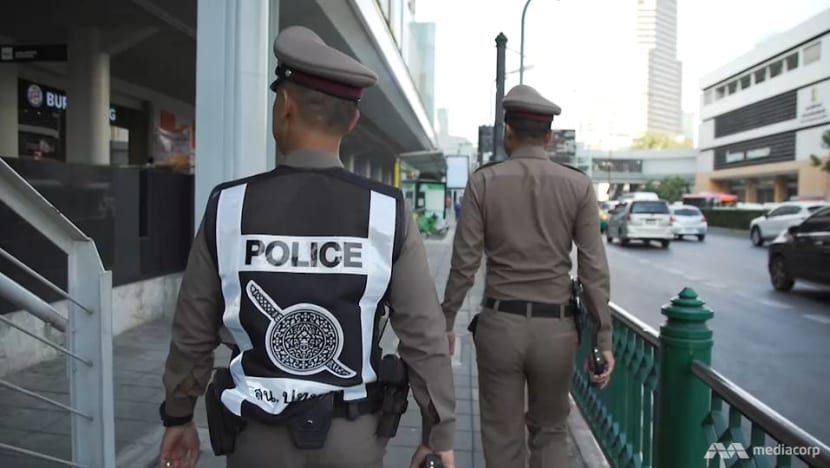
Also, the police’s advice is that alumni should be barred from school grounds. “We consider the act an intrusion. The school can report it to us so we can investigate them,” he added.
“It’s the tradition in both institutes that the alumni return to ‘take care’ of junior students … It’s better for them to stay away from the freshmen because they might teach them incorrect values.”
When asked, however, Mr Sompode said nobody has stopped him from entering his alma mater. “Nobody can stop me. This is my house,” he said. “Pathumwan Institute of Technology is the only place that makes me feel I have value.
“(The police) think I come here to incite the students … It isn’t true. I talk to them as friends.”
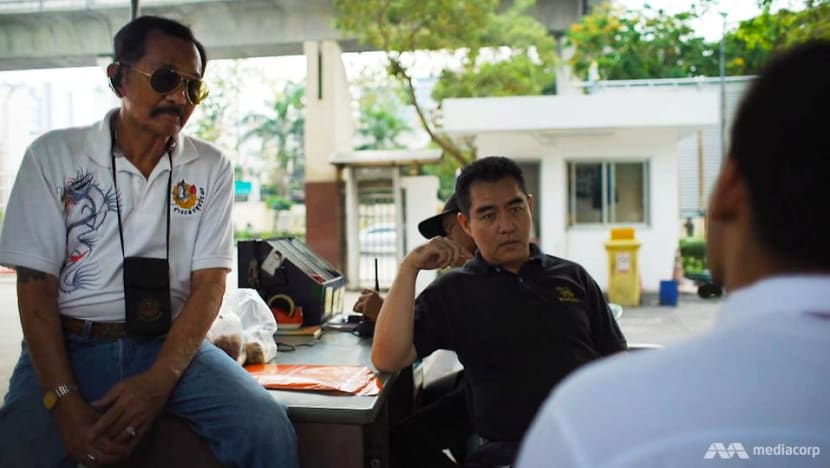
What both schools have imposed is a zero tolerance policy on students caught meeting rival students in the district.
To avoid punishment, students have to stay away from places where there is a high chance of bumping into each other — where young people usually hang out, like the MBK Centre.
PERSONAL DREAMS, NATIONAL GOALS AT STAKE
With the strict policing, student clashes have moved elsewhere, although there are still some incidents, like last August when nine students — six from Pathumwan and three from Uthenthawai — were apprehended by police officers and fined for carrying weapons and brawling.
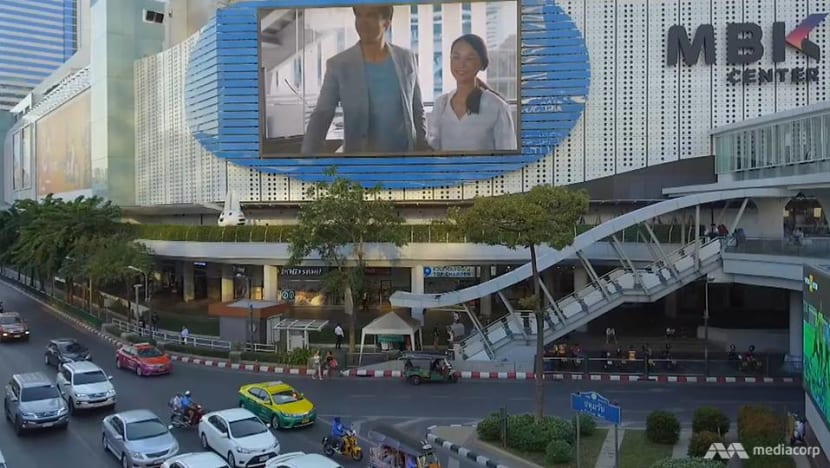
Pathumwan Institute vice president Suebpong Moungchoo stressed, however, that the violence “is already much rarer than before”, including when he was a student of the school.
The warring students should also not be judged from “a short moment of their lives”, he said. “People’s behaviour will change because of their age and environment. When they grow older, their mindsets will change.”
Citing himself as an example, he added: “I was like the other vocational students. I was a troublemaker. I used any kind of weapon to fight … After I graduated, I never used violence in the workplace.”
To keep students out of trouble, student welfare officer Adisak Yangthisarn tries to befriend them and counsels the rebellious ones not to fight.
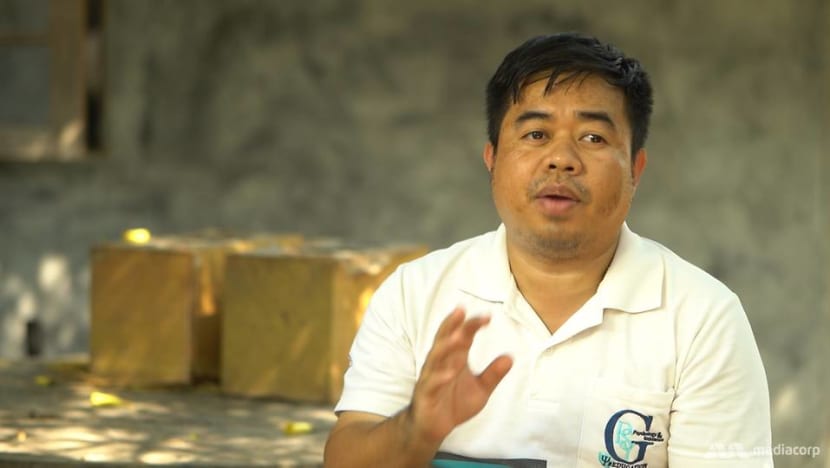
“I’d send the students who cause any violence to their adviser. It’s their adviser’s duty to talk to them because the adviser knows them best,” he said.
“I’d be there with them too. I’d teach them what’s right or wrong and tell them what they’d get from doing that. I’d talk to them with reason.”
The student factions, however, are locked in a state of power play and paranoia.
“The basic thing for a student who wants to study here is to cut themselves off from society because we don’t know who’d talk behind us. Our friends may accidentally leak information to our enemies,” said Benz.
“(Outsiders) think we’re crazy. Yes, we are … They might be curious whether we’re going to school or going to war. We can’t say that we don’t want to fight, but what we do is to protect ourselves.”
WATCH: Deadly school rivalry behind clashes at Bangkok's MBK (3:09)
Difficult as it may seem, whether people like Mr Adisak succeed in keeping students out of trouble has big implications — beyond public safety — as vocational education provides a key to Thailand’s ambitions of becoming a high-income economy by 2027.
The kingdom faces a shortage of qualified technical and vocational workers. And violence among schools only pushes parents to steer clear of vocational education for their children, even though for some, their livelihood from farming now brings dismal returns.
Pae is one of those from a rural area. He has been suspended for one and a half years for staring rival students down. But he has not given up on studying, “no matter how rebellious” he is.
“It’s my dream to study here,” he said. “I’m poor. My mother is poor. If I don’t try, I won’t be able to survive.”
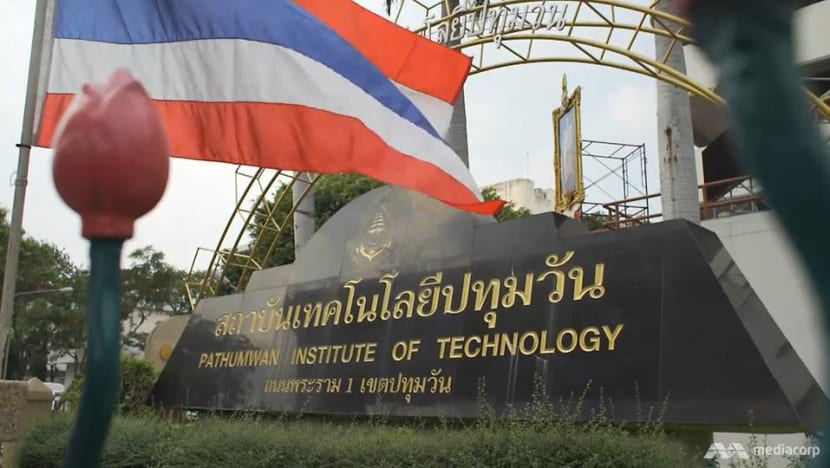
Kamonwich, on the other hand, lost that chance simply because his profile — most likely picked out via social media — was similar to a Pathumwan old boy who was killed while selling food with his aunt.
Mr Nattapong, who interviewed Kamonwich’s parents, said: “I could tell they were so sad from their eyes, because they’d just lost the son who’d have one day been a tower of strength for the family.
“I’ll never understand (why vocational students fight). I can’t believe they kill each other because of reasons that are nonsense. The students shouldn’t die like this, because some of them really want to study peacefully.”
Watch this episode of Get Real here. New episodes air every Monday at 9pm.
